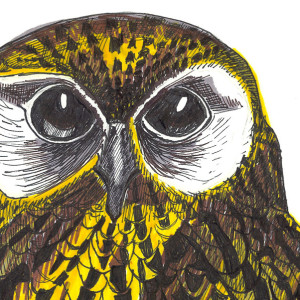Look at how handsome he is. This is another New Zealand bird. His cry sounded like “a series of dismal shrieks frequently repeated”, or, alternately, as “a peculiar laughing cry, uttered with a descending scale of notes”. No one is really sure what happened to the Laughing Owl; by the time European naturalists starting paying attention to it it was…
Tag: birds
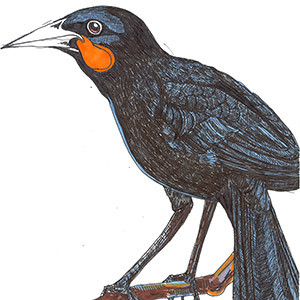
Huia
From New Zealand. The Maori prized their feathers and wore them in battle. They made jewelry, amulets and carved boxes especially to hold Huia feathers. They gave them to each other as tokens of friendship and of respect, and used them in funeral rites. At first only powerful chiefs were allowed to wear their feathers, but soon after the Europeans…
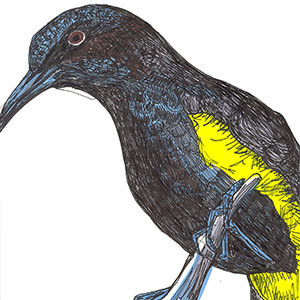
Ohahu O’O
John Zorn named an album after this guy. They were a kind of honeyeater. Not much is known about them. Their plumage was used in robes for the Hawaiian nobility. They were native to O‘ahu and disappeared around 1837. Thirty percent of all known recently extinct birds in the world were originally from Hawaii. 70 percent of all native bird species in the…
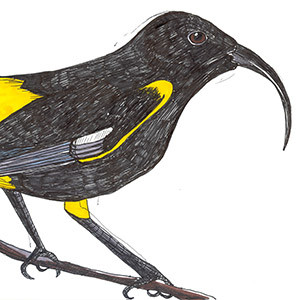
Mamo
Generations of Hawaiian Royalty trapped Mamos and used their yellow rump feathers for ceremonial royal war cloaks. The Kings of Hawaii supposed ruled that anyone who trapped a Mamo was prevented from killing it, and were required to turn them loose once their yellow feathers had been plucked. It’s impossible to say if this was an effective edict, or if…
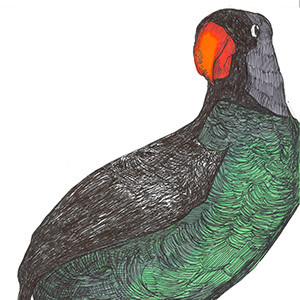
Mascarene Parrot
Based on a colored engraving by Jacques Barraband from F. Levaillant’s Histoire Naturelle des Perroquets. Vol 2, Paris, 1801-5. Wikipedia says: The Mascarene Islands (or Mascarenhas Archipelago) is a group of islands in the Indian Ocean east of Madagascar comprising Mauritius, Réunion, Rodrigues, Agaléga, Cargados Carajos shoals, plus the former islands of the Saya de Malha, Nazareth and Soudan banks.…
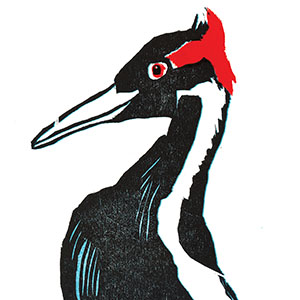
Ivory-Billed Woodpecker
The Ivory-Billed Woodpecker is probably extinct. Then again, maybe it isn’t. It was, or is, one of the largest woodpeckers in the world, at roughly 20 inches in length and 30 inches in wingspan. It was native to the virgin forests of the southeastern United States. Logging in the nineteenth century cause enough of a loss of habitat for the…
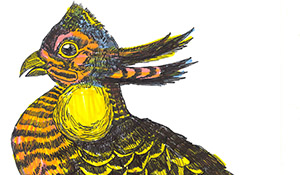
Heath Hen
The Heath Hen is one of the American birds on the list of extinct birds that helped build awareness about the existence of the phenomenon of extinction. It was a distinct subspecies of the Greater Prairie Chicken native to the East Coast, from New Hampshire down to Virginia. As a member of the grouse family, it was extremely common in…
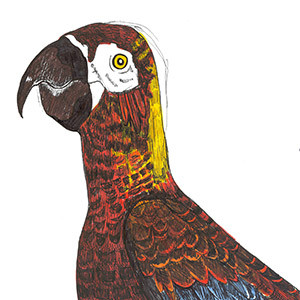
Cuban Red Macaw
Will you look at how lovely this guy is? This was a species of parrot native to Cuba and the Isla de la Juventud, an island off the Cuban coast. It was one of the smaller types of the macaws, only 18-20 inches long, and the last native Carribean macaw to go extinct. As befits a flashy bird like this…
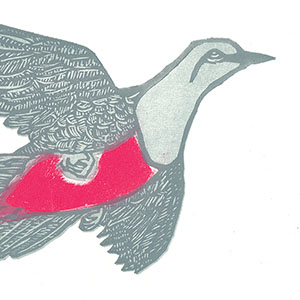
Passenger Pigeon
Probably the best-known extinct American bird is the Passenger Pigeon: Estimates of the total number of passenger pigeons at the turn of the nineteenth century are around 3 billion, 25 to 40% of all the breeding birds in America. Pigeon migration was a spectacle, as described by John James Audubon: I dismounted, seated myself on an eminence, and began to…
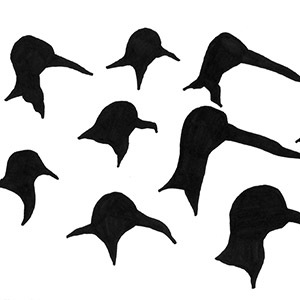
What Does It Sound Like
I started working on a field guide because I think that paper field guides, like travel guides and encyclopedias, will be gone soon. One reason is that the kinds of things that guides describe for each bird in order to differentiate them are often the things about birds that are difficult to document in print. Like birdsong: Quiet whistled peeping…

